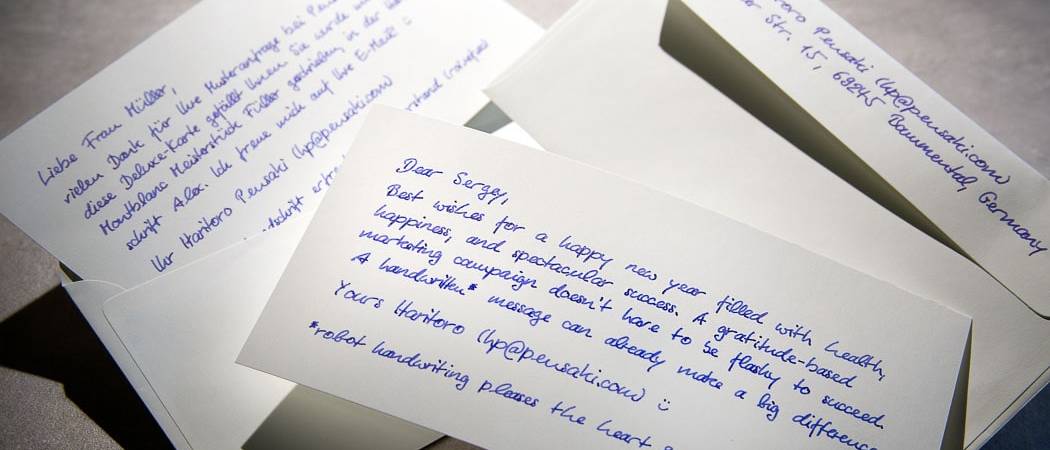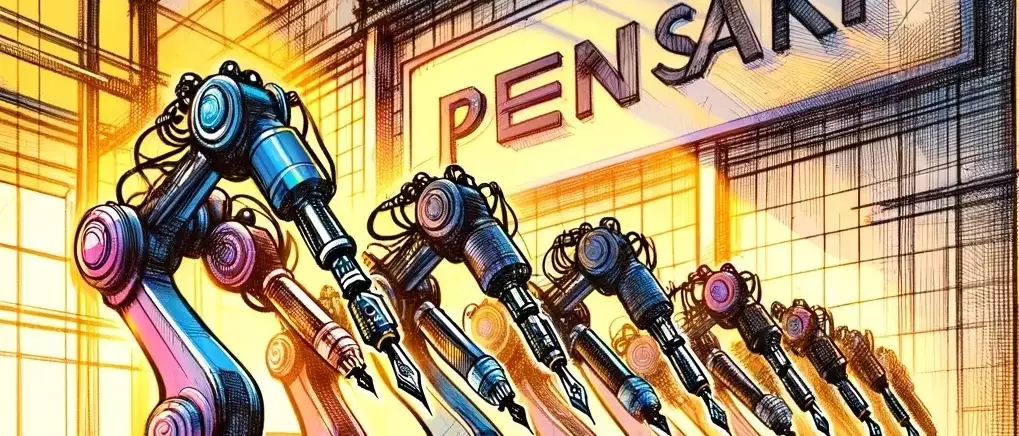Amazing Handwriting Robots Are Much Older Than You Might Imagine
Jeff
Pierre Jaquet-Droz invented the handwriting robot
Ironically René Descartes’ “I think therefore I am” sentence was already jotted down 250 years ago by a mechanical android, respectively “writer automaton”. Actually designed to look like a boy, “the writer” was created by Swiss-born watchmaker Pierre Jaquet-Droz in 1744. It was a complex mechanical masterpiece and it still works today. But such machines served primarily for entertainment purposes. This writing machine couldn’t think, but it was a cause for thought: Would machines one day also be able to reason like humans?
Computers are Everywhere and handwritten letters today
In the meantime Computers and computer science has become an integral part of our lives. Computers play chess, talk to us, sort mail, some even write poetry. Computer algorithms – a.k.a. algobots – are managing up to 80% of all trades on global stock markets or even actively managing financial portfolios. But one thing was missing: The human handwriting. The writing system 1.0, cursive on paper which resulted from the movement of the quill, remained a blank spot on the map of digitalization, as a derivative of the rather playfull androids from Pierre Jaquet-Droz.
Handwritten letters and the digital age
The advent of the keyboard and all the texting on all those devices has caused many people to neglect their penmanship over the last 30 years. Not only „digital natives“ rarely grab a pen and paper nowadays, but as texting has made (snail mail) letters essentially obsolete, the gift of snail mail is treasured. Somebody who endears himself to its friends/customers by sending them handwritten snail mail certainly stands out from the constant stream of electronic junk mail.
A recent study in Germany has shown that 80 % of Germans are delighted when they find something handwritten in their (snail) mailbox. Robots aren’t able to think yet, but they are able to master our handwritings and can put them authentically on paper with ball-pen and fountain pen. Day and night, seven days a week without getting tired; whether they are writing an individual postcard or masses of the same note.
An API for handwritten letters and much more
Technology makes our lives easier. Today it is even possible to combine technology with authentic handwriting. As a personal, human means of communication, the emotional effect of handwriting is a much sought after thing in certain industries. And what would be more obvious than a seamless integration of such solutions in already existing CRM and helpdesk systems?
Thanks to Pensaki’s open API (Application Programming Interface), this is now possible for the first time. The result is always something handwritten that will surprise and delight its recipients, especially when the sender reveals who actually has wielded the pen.
Because with all technophilia and all digital-to-offline interfaces it shouldn’t be forgotten that a lot of people long for reading something handwritten again; they just lack the necessary ingredients, mainly time and a readable handwriting.
At the same time a lot of room for creative experiments remains, because the content is totally up to the sender: It can be a simple message from the Facebook wall, instructions for live role playing, a love letter or simply a thank you message.
So despite all the technological advances and ways to simplify our lives, it’s still up to us to use our brains to think about what we want to write to whom and why.
Handwriting robots provide a valuable service today
I think, therefore I am” – a mechanical android or “writing robot” scribbled Descartes’ famous sentence on paper almost 250 years ago. The “scribe” created by Pierre Jaquet-Droz in 1774 was a mechanical masterpiece that still works today. At that time, however, such machines were primarily used for entertainment and not for the professional production of high-quality letters in handwriting. The writing machine could not think, but it was food for thought: would machines one day actually take on human features?
Handwriting robots and computers in everyday life
In the meantime, computers and robots have become indispensable in many industries. According to a study by the Ludwig Maximilian University, computer-generated texts are even perceived by people as more factual and credible than those created by humans. Today, computers play chess, talk to us, sort the mail, some write poetry or are even responsible for most of the world’s stock trading.
But one thing has been missing until now: their own handwriting. The writing system 1.0, the cursive flowing over the paper, resulting from the movement of the pen, remained a white spot on the map of digitisation, as a further development of the rather playful androids by Pierre Jaquet-Droz.
Handwritten letters created by handwriting robots
At the same time, people are losing handwriting. Digital natives hardly ever reach for pen and paper any more. This loss of haptics and pure emotion becomes palpable when a handwritten card lands in the letterbox. Eighty per cent of people are happy to receive handwritten cards. Writing robots still can’t think, but they can learn our handwriting and put it down on paper authentically with a fountain pen or biros. Day and night, seven days a week, without getting tired. Handwritten postcards and letters are very successful because the appreciation expressed makes all the difference.
Be smart and sign up for our newsletter!
Your competition keeps itself up to date.

